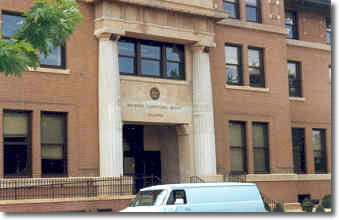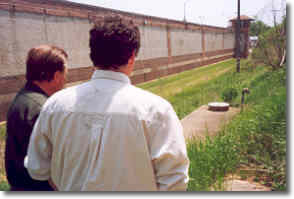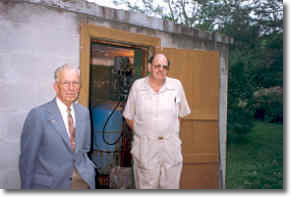Drinking Water Protection
- Drinking Water Protection Home
- About Us
- A-Z Index of Contaminants in Water
- Community Public Water Supply
- Drinking Water Grants and Loans
- Drinking Water Institute
- Drinking Water in Schools and Child Cares
- Drinking Water Revolving Fund
- Laws and Rules
- Noncommunity Public Water Supply
- Source Water Protection
- Water Operator and Certification Training
- Drinking Water Protection Contacts
Related Topics
- Annual Reports
- Drinking Water Risk Communication Toolkit
- Drinking Water Protection External Resources
- Fact Sheets
- Forms
- Invisible Heroes Videos: Minnesota's Drinking Water Providers
- Noncom Notes Newsletter
- Sample Collection Procedures (videos, pictures, written instructions)
- Waterline Newsletter
Related Sites
- 10 States Standards
- Clean Water Fund
- Health Risk Assessment – Guidance Values and Standards for Water
- Minnesota Well Index
- Water and Health
- Wells and Borings
Environmental Health Division
Nonmunicipal Water Systems Are Many and Varied
From the Winter 1996-97 Waterline
Quarterly Newsletter of the Minnesota Department of Health Public Water Supply Unit, Waterline
A complete list of feature stories can be found on the Waterline webpage.
 Nearly 75 percent of Minnesotans receive their drinking water from one of the 959 community water suppliers in the state. Most of these systems are utilities operated by cities; however, nearly one-third of the community systems fall into the nonmunicipal category. These systems are diverse, both in size—ranging from fewer than 25 residents served to over 5,000—and in type.
Nearly 75 percent of Minnesotans receive their drinking water from one of the 959 community water suppliers in the state. Most of these systems are utilities operated by cities; however, nearly one-third of the community systems fall into the nonmunicipal category. These systems are diverse, both in size—ranging from fewer than 25 residents served to over 5,000—and in type.
The majority of nonmunicipal systems (145 of 250) consists of mobile home parks, with all but 12 of them serving 100 or fewer residents. nonmunicipal systems also comprise 43 housing subdivisions and 24 apartment/condominium complexes; neither of these categories includes a system serving more than 100 residents nor do the nine nursing homes that have their own community water systems.
The remaining categories—schools, correctional facilities, treatment facilities, and an “other” category that includes convents and hospitals—are smaller in number of systems but larger in terms of number of people served: five of the nine schools, including St. Olaf and Carleton College and St. John’s University, serve more than 1,000 people with a median of 1,600 for the overall group of schools. The median for correctional facilities is 650; for treatment facilities, 391; and for the “other” category, 102 (although this includes the largest nonmunicipal community system in the state, Abbott-Northwestern Hospital, which serves 5,600).
Twin Fawn Mobile Home Park
An example of a typical water system for a mobile home park is Twin Fawn Mobile Home Park on U. S. Highway 61 outside of Frontenac. It is a small system—having only 20 connections—but one that faces some of the same challenges as larger suppliers.
John and Wyvona Schmauss have operated the development for 19 years. They inherited a water system dealing with high iron, a common problem in that area. Wyvona remembers that one of the local restaurants began using colored glasses as a way of hiding the redness in the water.
The water supplied at Twin Fawn was softened in a futile attempt to deal with the iron. The Schmausses then tried a phosphate additive but without results. Finally, they found success by transforming the softening units into iron filters and adding a chlorine feed system as a means of oxidizing the iron.
Chuck Dudrey, whose daughter lives in the complex, now operates the water supply for Twin Fawn and reports that the system has never experienced any problems with bacterial contamination. However, for the past few years, he has grappled with a lead situation. During tap sampling in July 1993, two of the five homes tested exceeded the action level for lead.
The Schmausses want to be able to deal with the lead issue without having to add expensive equipment or treatment that would cause them to pass the costs on to residents. “For a lot of people, living in a mobile home is a matter of economics,” says Wyvona. “An increase of even a few dollars in their monthly bill can be a big burden for them.” She hopes the problem can be solved with the replacement of some faucets, a much more inexpensive alternative.
Wyvona says they would love to get out of the water business and connect to a municipal supply; however, the nearest system is seven miles away in Lake City, and the cost of hooking up would be prohibitive. Meanwhile, they continue to do what’s necessary to supply water to the 45 residents in the complex.
 |
 |
| Plant operator Jim Dombrovski (left) explains the system used to provide drinking water at the Minnesota Correctional Facility at Stillwater. | Co-owner John Schmauss and water operator Chuck Dudrey of Twin Fawn Mobile Home Park. |
Minnesota Correctional Facility—Stillwater
The Minnesota Correctional Facility at Stillwater is a larger nonmunicipal system, serving 1,350 inmates and 500 staff members. Jim Dombrovski has been the plant operator at the prison for 16 years. Budget cuts through the years have eliminated other civilian operators, causing Dombrovski to rely on two to three resident operators, who are selected from the minimum-security population. The plant is automated but requires 24-hour monitoring. “They’re my eyes and ears,” says Dombrovski. The Department of Corrections has expressed security concerns regarding the use of inmates as operators. With the plant itself outside the prison walls, the possibility of an escape attempt is the primary threat. But Dombrovski says he has never any problems with his operators. "They do a good job and stay out of trouble,” he adds.
The operators receive a week of training from Dombrovski, who has even taken a couple of them to off-site training courses so they can get licensed. He is aware of at least two who have gone on to become water operators for municipalities upon release from Stillwater.
The Stillwater system has two wells: one is a 735-foot-deep, 1,260 gallon per minute (gpm) well and is located outside the prison walls; the other, located within the compound, is a 715-foot-deep, 600 gpm well that is used primarily as a backup.
The water is disinfected, then pumped into the tower. From there it serves the inmates and staff by gravity, supplying 500,000 gallons per day. Although most of the water is used for drinking and cooking, a separate line draws off approximately 150,000 gallons a day for use in the boilers. This water is softened in the plant before receiving additional treatment from zeolite filters inside the prison walls to bring the total hardness down to zero, which is necessary to maintain the boilers.
Chlorination helps assure the water used for drinking and cooking is safe, but aesthetic problems, primarily red water, result because of high iron and manganese.
Many years ago, the prison considered hooking into the municipal water supply in nearby Bayport; however, such a switch would have been expensive because Bayport would have required the correctional facility to upgrade the north end of the city’s distribution system. “We have two good, productive wells,” Dombrovski says. “It’s cheaper to do it ourselves.”
The facility’s water system is slated for improvements totaling $250,000. Under the plan, the current plant will be shut down and a new zeolite system installed, entirely inside the prison walls. All of the water will be softened by the new system, which will tap into the same line that now feeds the powerhouse and boilers. Dombrovski adds that the improvements, which could be completed by the end of 1996, should also solve the red water problems.
So while municipalities will still be the more prominent of community water suppliers, nonmunicipal systems in the state continue to play an important role in delivering safe drinking water to Minnesotans.
Go to > top.